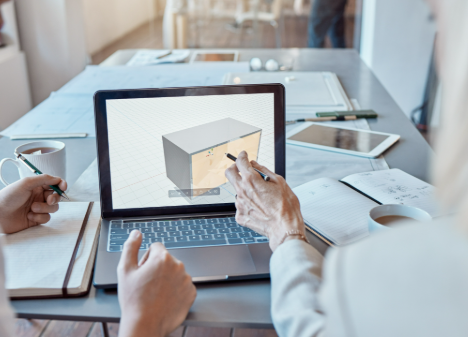How 3D Modeling Is Transforming the Design Industry

3D modeling is reshaping the design industry in profound ways. Its ability to create enhanced visualizations allows designers to produce lifelike representations that captivate clients. Streamlined design processes further facilitate rapid iterations, fostering innovation. Additionally, improved collaboration tools enable seamless communication among teams, regardless of their locations. As these advancements unfold, the implications for various sectors become increasingly significant, hinting at a transformative future yet to be fully realized.
Enhanced Visualization and Realism
As 3D modeling technology continues to evolve, it significantly enhances visualization and realism within the design industry.
Realistic rendering techniques create lifelike representations, enabling designers to convey their visions with unprecedented clarity. This heightened realism fosters immersive experiences, allowing clients and stakeholders to engage deeply with concepts, facilitating informed decisions.
Ultimately, advanced 3D modeling empowers creative freedom, transforming ideas into vivid, tangible realities.
Read more: How Technology Is Changing the Way We Communicate
Streamlined Design Processes
The integration of advanced 3D modeling techniques not only enhances visualization but also streamlines design processes within the industry.
Automated workflows facilitate efficiency, allowing designers to focus on creativity rather than repetitive tasks.
Additionally, rapid prototyping enables swift iterations, significantly reducing time from concept to completion.
This synergy of technology empowers designers to explore innovative solutions while maintaining quality and precision in their work.
Improved Collaboration and Communication
While traditional design methods often hindered collaboration, the advent of 3D modeling has transformed communication dynamics within the design industry.
Enhanced virtual teamwork capabilities allow designers to share and manipulate models in real-time, fostering immediate design feedback. This interactive environment empowers stakeholders to contribute ideas fluidly, ensuring a cohesive vision that transcends geographical barriers and nurtures creativity in the design process.
Expanding Opportunities Across Industries
Expanding horizons within the design industry, 3D modeling has emerged as a pivotal force, opening doors to various sectors beyond traditional architecture and product design.
Its integration with virtual reality enhances user experiences, while innovative techniques drive efficiency across industry applications.
As market trends evolve, professionals leverage these advancements, fostering a landscape rich in potential, creativity, and transformative possibilities for diverse fields.
Conclusion
In conclusion, 3D modeling acts as a catalyst, igniting a seismic shift within the design industry. By enhancing visualization, streamlining processes, and fostering collaboration, it unlocks a treasure trove of opportunities across diverse sectors. As designers wield this powerful tool, they not only breathe life into their visions but also redefine the boundaries of creativity. The future of design, illuminated by the brilliance of 3D modeling, promises to be as dynamic and multifaceted as the ideas it brings to fruition.



